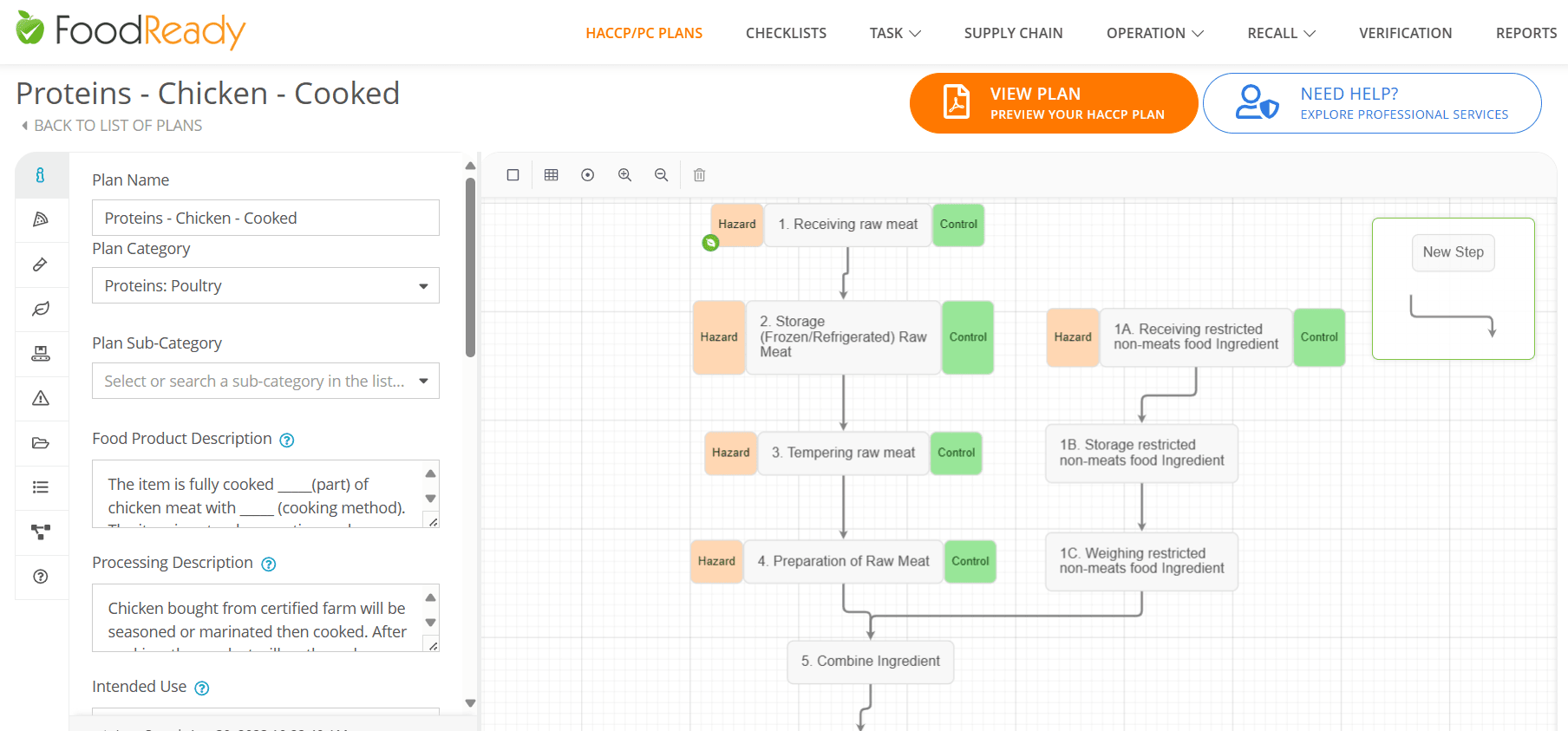Chicken HACCP Plan Guidelines
Are you preparing for a USDA inspection? We have poultry and chicken processing HACCP plan templates and food safety plan templates that are easily customizable.
Chicken HACCP Plan
Guidelines - Introduction
- Poultry Manufacturers
- Poultry Slaughterhouses
- Cooked Chicken
- Fried Chicken
- Poultry (raw)

Why HACCP /
Food Safety Plan?
The HACCP Plan serves as a part of a comprehensive food safety system rather than existing as an isolated program. The foundational programs that are part of the food safety system are frequently termed prerequisite programs. The term was coined to indicate that they should be in place before HACCP based systems are implemented in order to effectively manage risk from foodborne hazards. The Current Good Manufacturing Practice (GMP) regulations address requirements for many prerequisite programs. USDA section 402(a)(3) outlines the conditions and practices the regulated food industry must follow for processing safe food under sanitary conditions, including personnel, plant and grounds, sanitary operations, sanitary facilities and controls, equipment and utensils, processes and controls, warehousing and distribution, and defect action levels considerations. Elements of GMPs that are not covered in the HACCP are still required by regulations.
We Can Help You Develop Your
Food Safety Documentation
Suggested
Logs and Records
- Customer Complaints
- Corrective Action Forms
- Employee Training
- Food Safety Quarterly Audit
- Food Safety Checklist
- Raw Materials/Receiving Log
- Worker Illness Log
- Freezer Log
- Thawing Log
- Refrigerator Log
- Assembly Log
- Shipping Temperature Log
Suggested Supply Chain
Documents
- Food Safety HACCP or Preventive Controls Plan for each product
- Food Defense/Business Continuity Plan
- Validation of each product and/or process and Ready-To-Eat statements (if applicable)
- Certificates of Analysis (COA)
- Third Party Audit Certificate, Report & Corrective Actions
- Product Specification
- 100g Nutritional Information
- Allergen Grid / Statement
- SDS / MSDS Statement
- GMO / Non-GMO Statement
- Country of Origin
Potential Hazards
Biological
- Pathogenson Exterior Surface; Full Guts
- Cross-Contamination Pathogens
- Cross-Contamination Pathogens (Gut Breakage)
- Spoiled Giblet
Chemical
- Pesticide Residue (Potential)
- Improper ingredients in Solution: could Potentially introduce allergens (i.e. proteins)
Physical
- Foreign Objects (Rock, Glass Metal in GI Tracts)
- Pallets, Staples (Wood or Metal)
Suggested Standard
Operating Procedures (SOPs)
- Using and Calibrating Thermometers
- Transporting Food to Remote Sites
- Cooling Potentially Hazardous Foods
- Cleaning and Sanitizing Food Contact Surfaces
- Storing and Using Poisonous or Toxic Chemicals
- Preventing Cross-Contamination During Storage and Preparation
- Receiving Deliveries
- Cleaning Building and Facility
- Allergen Control Program
- Washing Hands – To Prevent Foodborne Illness by Contaminated Hands
- Employee Illness Program

Additional Components for
Compliance (Recommended)
Recall Plan
Verification

Speak with our
Expert Consultants
Get a Free Consultation With Our Food Safety
and Quality Experts Today!


